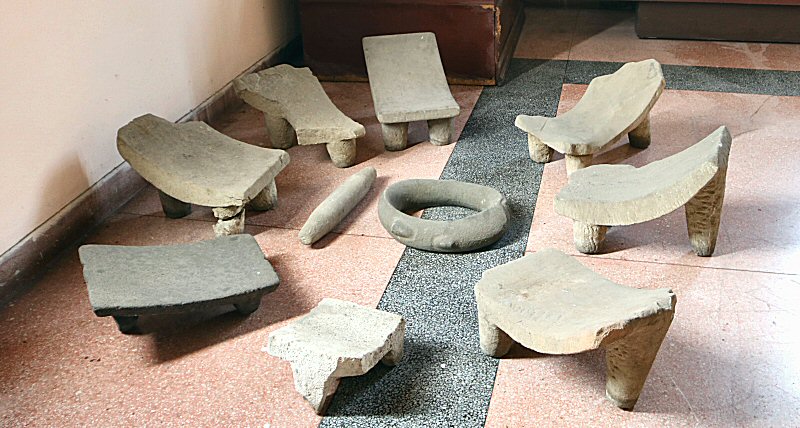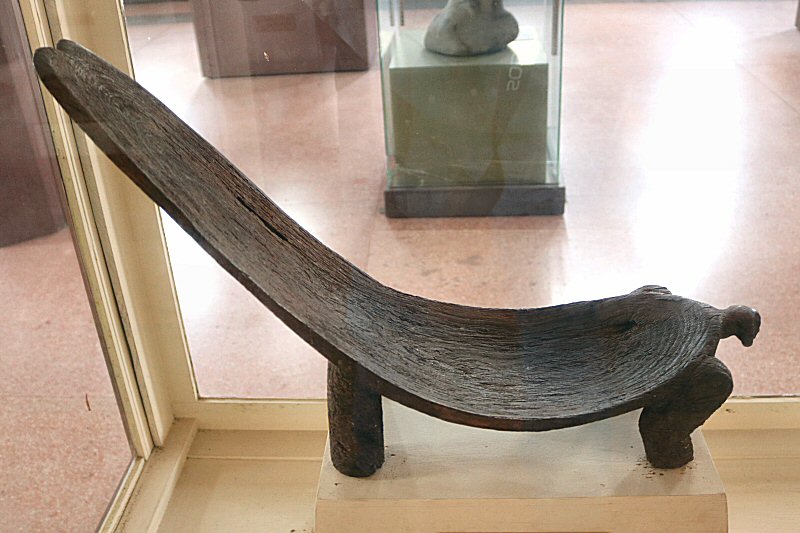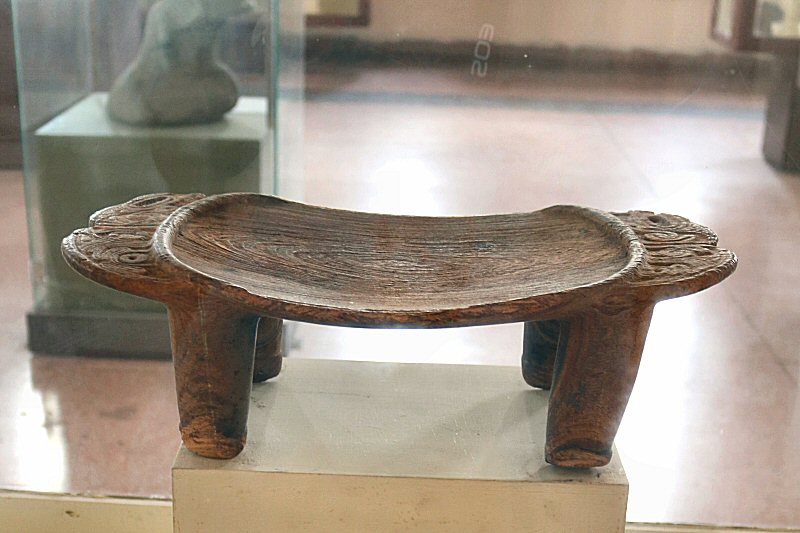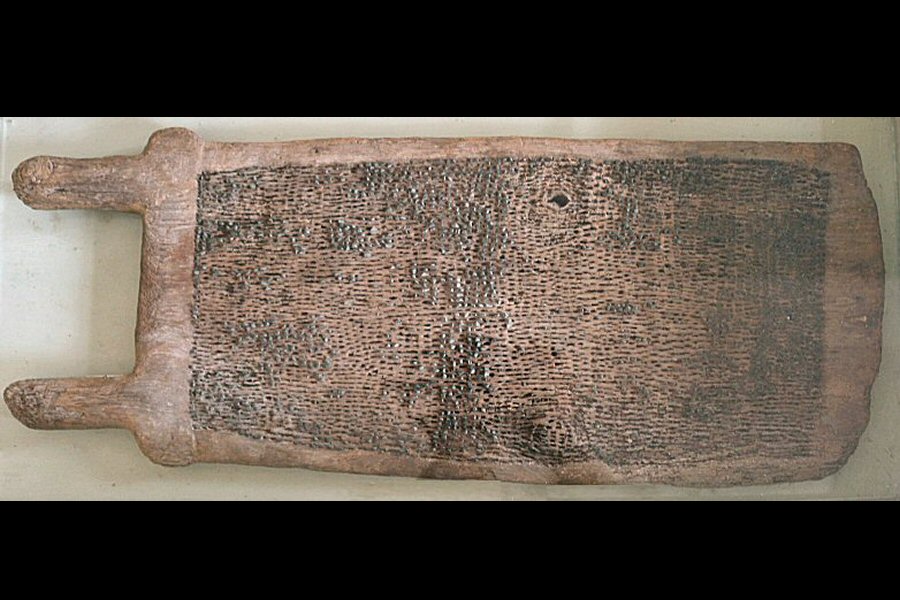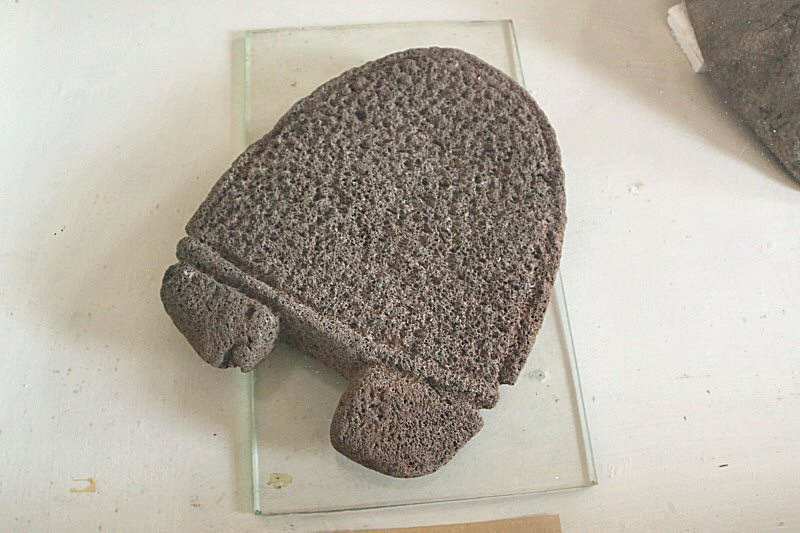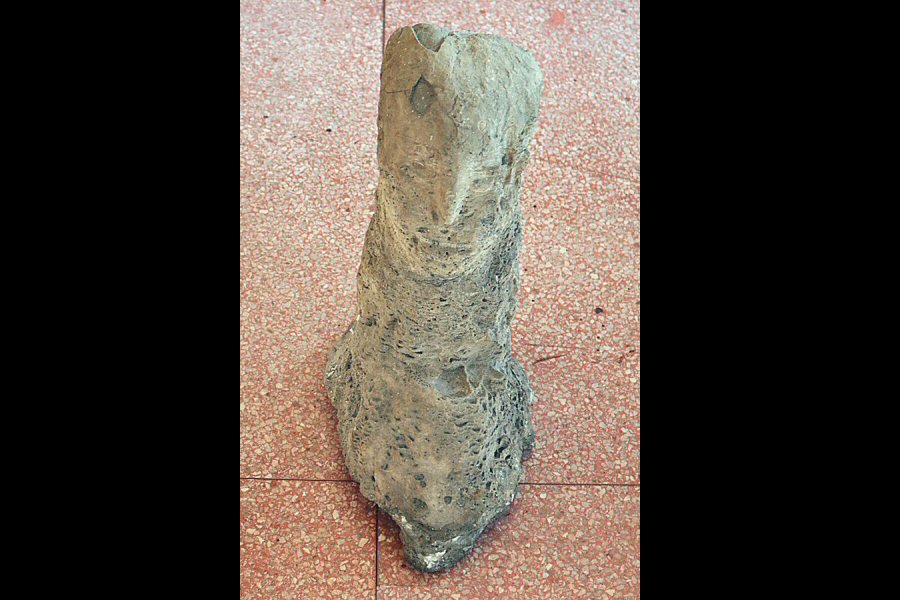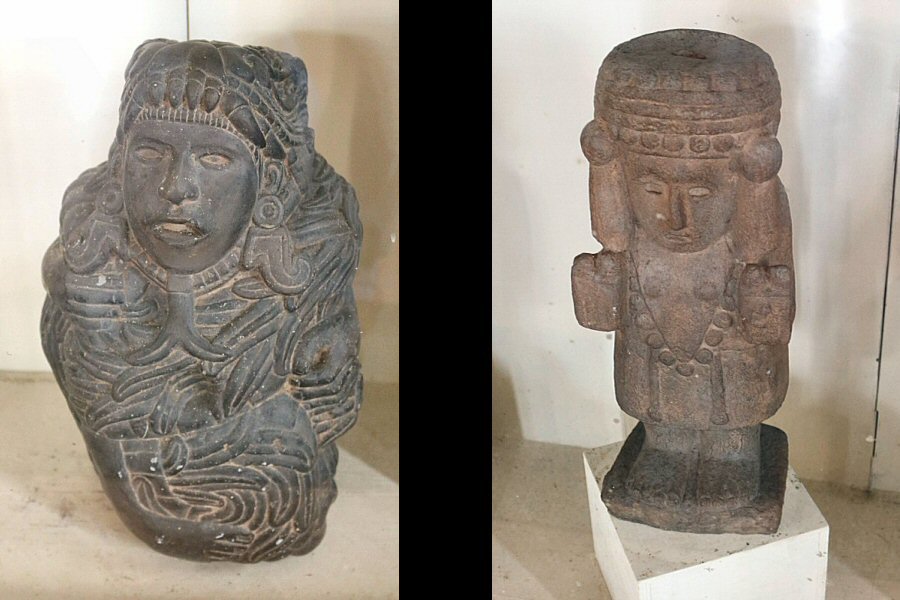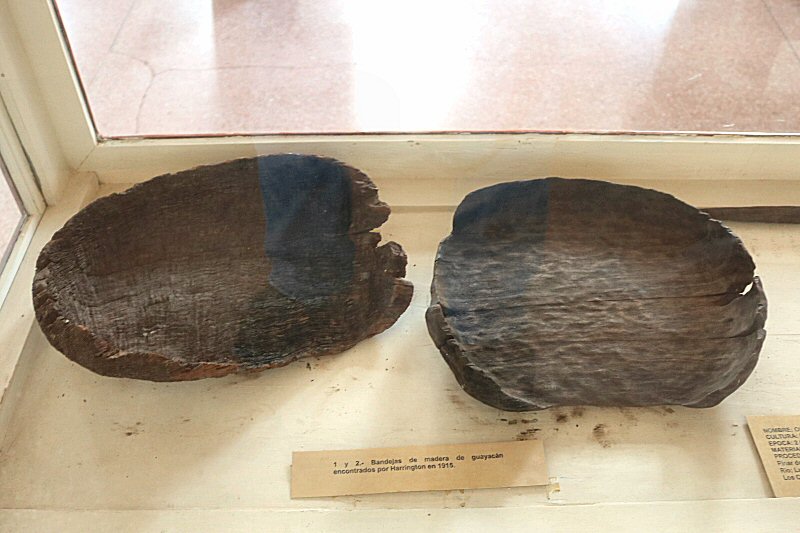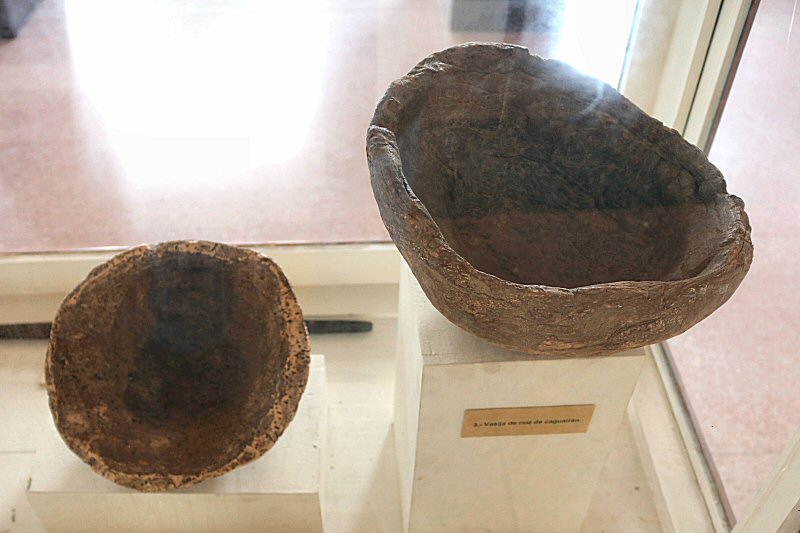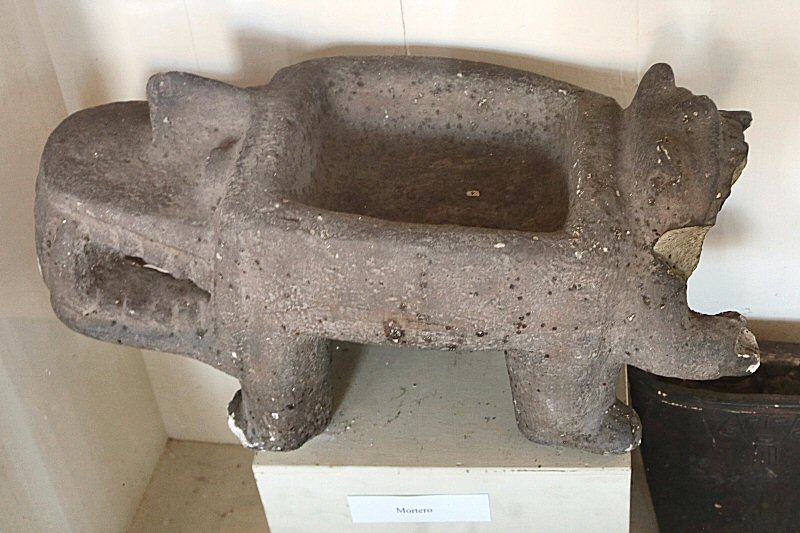The Dujo
de Santa Fe is another valuable piece of the collection of the
museum. The dujo is the symbolic seat of stone or wood used by
the caciques (chiefs) and behíques (sorcerers) of the Taino
society. The behiques, spiritual guides of the aboriginal
peoples of the Caribbean, used the dujo to perform the ritual of
the cohoba. During this ritual, with the help of the inhaled
powders, consisting of tobacco leaf dust mixed with
hallucinogenic plants, and great mental concentration, they
could evoke the supernatural and could communicate with gods.
The seat was well carved and polished in a design that allowed
the behíque to rest on it, concentrating on his trip to other
dimensions. On the other hand, these chairs were offered to
important visitors to pay tribute. According the chronicles of
Don Bartolome de las Casas, Christopher Columbus was hosted in
the same way.
The aboriginal ceremonial seat in the
museum is carved from a single piece of guayacán wood that can
be found at the mouth of the Santa Ana river in Santa Fe, west
of Havana. It is very well carved and polished. It is of
6th century. It represents a four-legged animal, with short legs
and a small face. The slightly curved and raised tail forms the
long support for back, so that the forward projected cemí (the
animal figure) remains in between the legs of the resting
person.
There is another dujo among the
collection of the museum, the Dujo de Jauco. It was used as a
ceremony tray for ceremonial offerings. It is carved from a
single piece of guayacán wood. It was found in the cave at Mesa
del Sordo, Jauco, close to Maisi in Baracoa. It is of the 7th
century.
Yucahú Bagua Maórocote is supreme
being in the Antillean mythology, particularly in the Aruacan
mythology. It has not any ancestor, but a mother, Atabey. It is
the invincible protector of man. It is the lord of the yucca and
the sea. It is usually seen in three-tipped artifacts, carved
from stones, called trigonoliths, that look like human body,
frog, flamingo or manatee. Usually, these artifacts had a face
with an open mouth, symbolizing the greed for ingesting
nutrients from the soil. During the ritual, referring to Yúcahu
Bagua Maórocoti, the trigonolith was buried into the soil next
to the seed of the yucca and the Taino people were urinating on
the seed to invoke Yucahuaguamá, the Yucca Lord, because it had
the magical influence to fertilize the soil and to promote the
harvest generously.
There are two guayos (graters) in the
museum. The guayo is used to grate yucca and guáyiga to obtain
the white dough of the cassava bread. The wooden one is from the
7th century and it was found in Baracoa. The other guayo is from
Haiti and made of volcanic stone.
The collection contains also some
plates, made of guayacán wood, and some vessels, made of
caguairán root (a Cuban tree, characterized by its hard and
resistant wood), that served to preserve or to carry food,
particularly the cooked food.
A part of the pre-hispanic collection
of the museum was acquired from the collection of the engineer
Ernesto Segeth in 1934. It consists of petaloid axes, made of
diorite and serpentine, and a stone mortar.
The sixth section of the museum is
dedicated to the examples of the Mesoamerican and South American
archeology. You can see the 6th century pan with zoomorphic
handle from Central America, the stone statue of Aztec culture,
representing the assistant of the priest carrying casserole for
offering and the stone statues of two Aztec supernatural beings.
One of the statues belongs to Chicomecoatl, the Aztec goddess of
agriculture. While she symbolizes the agricultural prosperity,
she was also called as Seven Serpent, as she was blamed for the
years of poor harvest. The second statue belongs to the
Feathered Serpent (Quetzalcoatl), the supernatural being, can be
found in many Mesoamerican religions. Its feathered
characteristics refers to its ability to fly, whereas as a
serpent it represents its human nature to creep on the ground
among other animals of the Earth.

